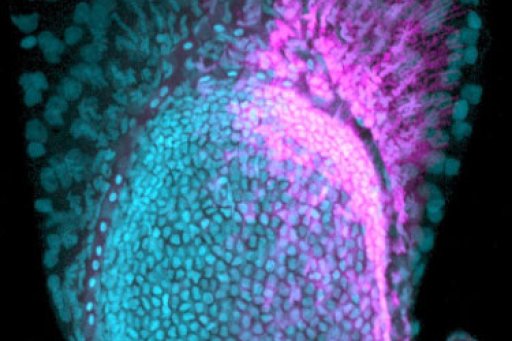A publication in Nature Communications by Adel Al Jord, a researcher at the Centre interdisciplinaire de recherche en biologie (CIRB) of the Collège de France in the team co-directed by Marie-Emilie Terret and Marie-Hélène Verlhac, establishes a new cellular function for the cytoskeleton.
Using an interdisciplinary approach combining cell, molecular and computational biology, as well as bioinformatics and theoretical biophysics, the authors discovered that mouse oocytes develop mechanical forces from the cytoskeleton as they grow in the ovaries, in order to reorganize nuclear organelles, known as condensates.
In collaboration with the team led by Jean-René Huynh at CIRB, the authors have shown that this ability of cytoplasmic forces to reorganize condensates within the oocyte nucleus has been conserved throughout evolution. Without this reorganization, maternal messenger RNA stocks and oocyte divisions would fail, impacting gamete fertility. Beyond reproduction, this new mechanism could shed new light on numerous anomalies linked to defects in cytoplasmic forces correlating with defects in condensate architecture, observed in cancers, neurodegenerative diseases and viral infections.
Authors: Adel Al Jord, Gaëlle Letort, Soline Chanet, Feng-Ching Tsai, Christophe Antoniewski, Adrien Eichmuller, Christelle Da Silva, Jean-René Huynh, Nir S. Gov, Raphaël Voituriez, Marie-Émilie Terret, and Marie-Hélène Verlhac.









